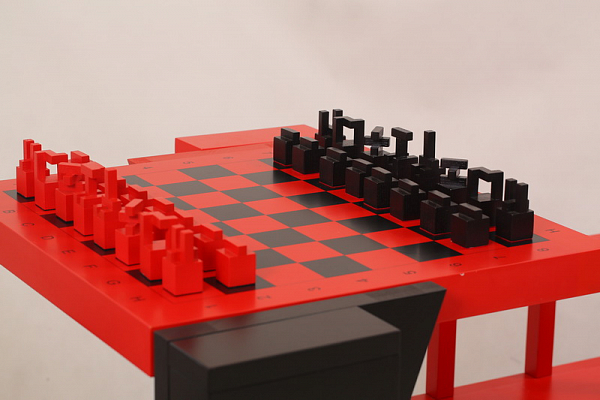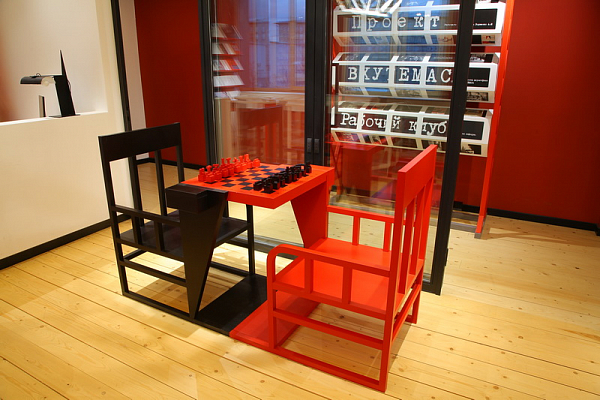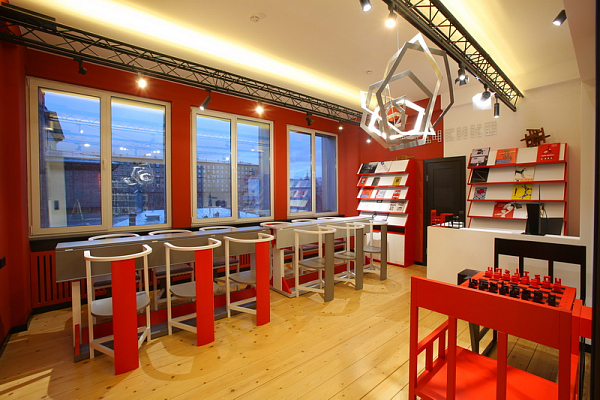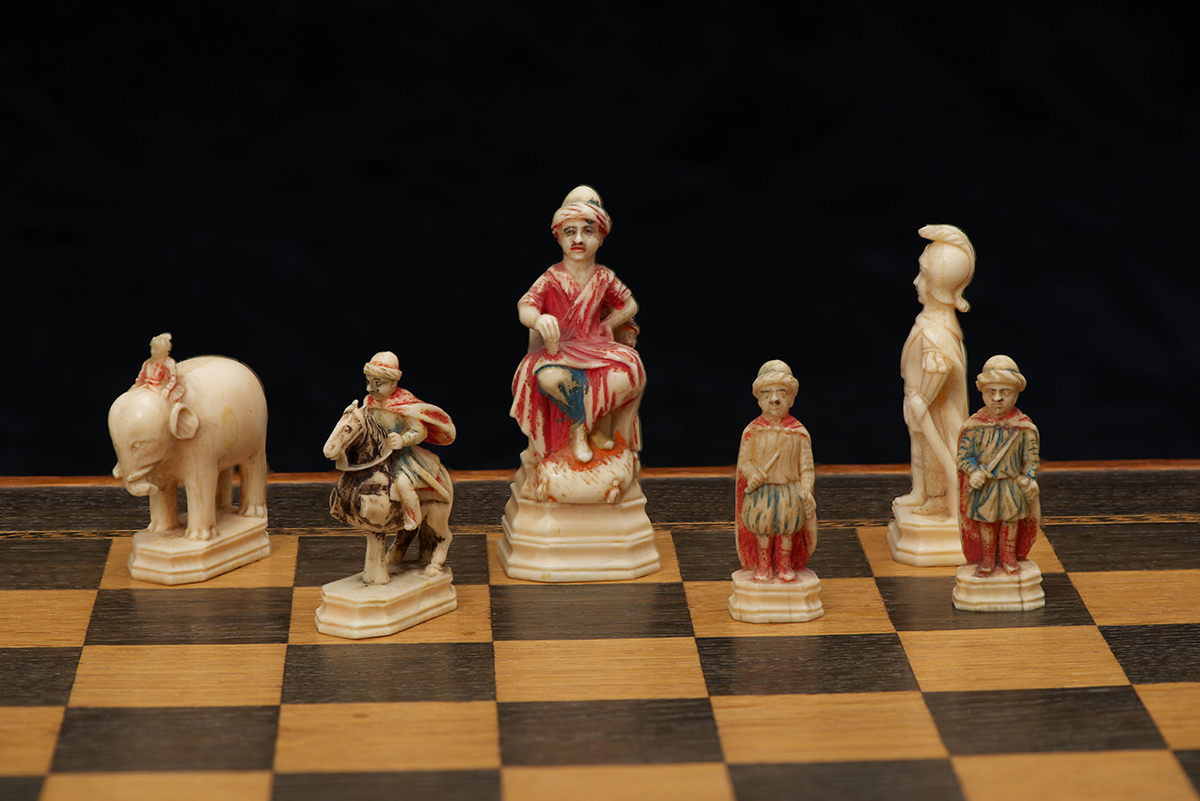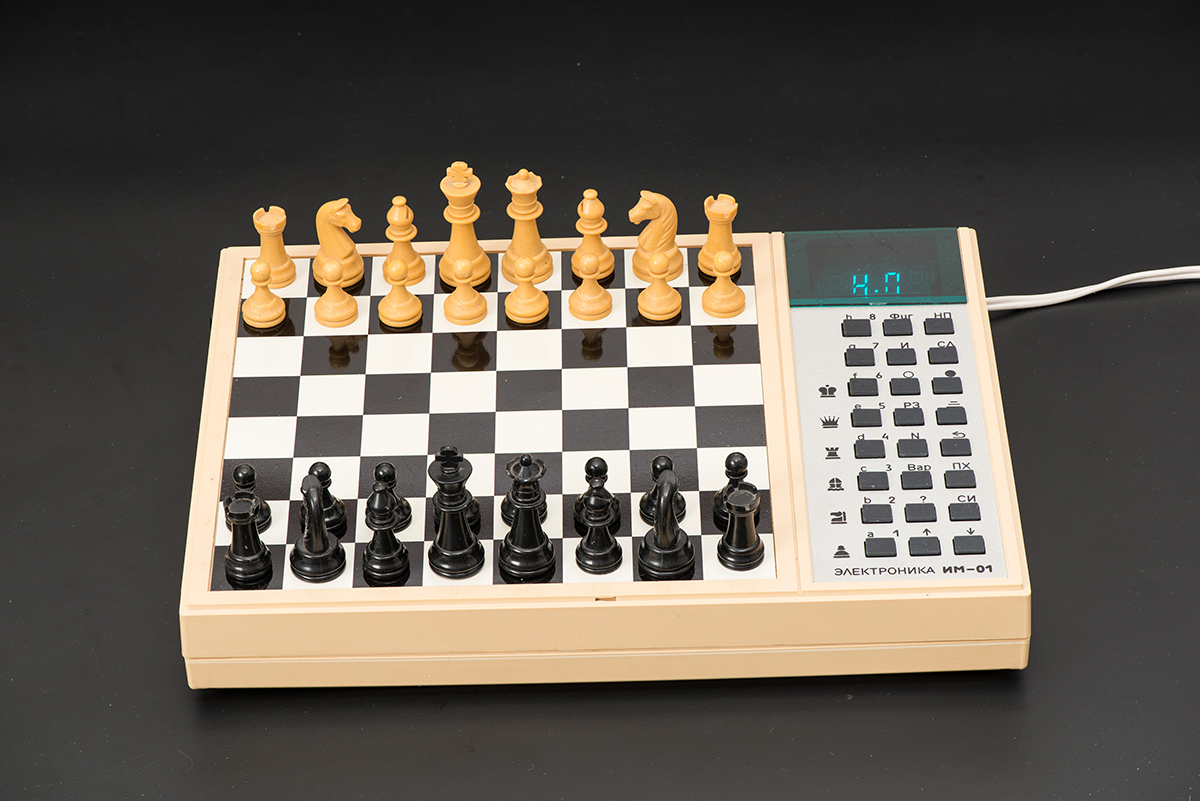Chess table designed by Alexander Rodchenko

Period
1925Place
Paris, France
Material
Wood and plywood
Location
Moscow, Art Russe Foundation
Category
The GameSubcategory
Chess tables
This chess table, crafted by the renowned Russian and Soviet artist Alexander Rodchenko, stands as a testament to the principles of constructivism. It was built for the Soviet Pavilion at the Paris World's Fair of 1925. Rodchenko’s vision was clear: to create an optimal space for self-education and cultural leisure, with chess at its heart.Guided by practical considerations rather than mere aesthetics, Rodchenko designed the chessboard tabletop to be horizontally rotatable. This ingenious feature allowed players to change their color at the start of each new game without needing to rise from their seats. The two chairs had armrests and rectangular backs made of four parallel vertical boards with a straight upper rail. These chairs were securely anchored to rectangular footings, precisely aligned beneath the center of the chess table.Following the exhibition, the entire furniture ensemble that constituted the “Workers’ Club” found a new home with the French Communist Party. Regrettably, the original set has since vanished, possibly lost in a fire during the late 1920s.Several attempts have been made to recreate the iconic set. The most complete and accurate copy of the “Workers’ Club” was made in 2021 by experts of the Moscow State Stroganov Academy of Design and Applied Arts from the original designs by Alexander Rodchenko and using the tools and techniques employed in the original.


